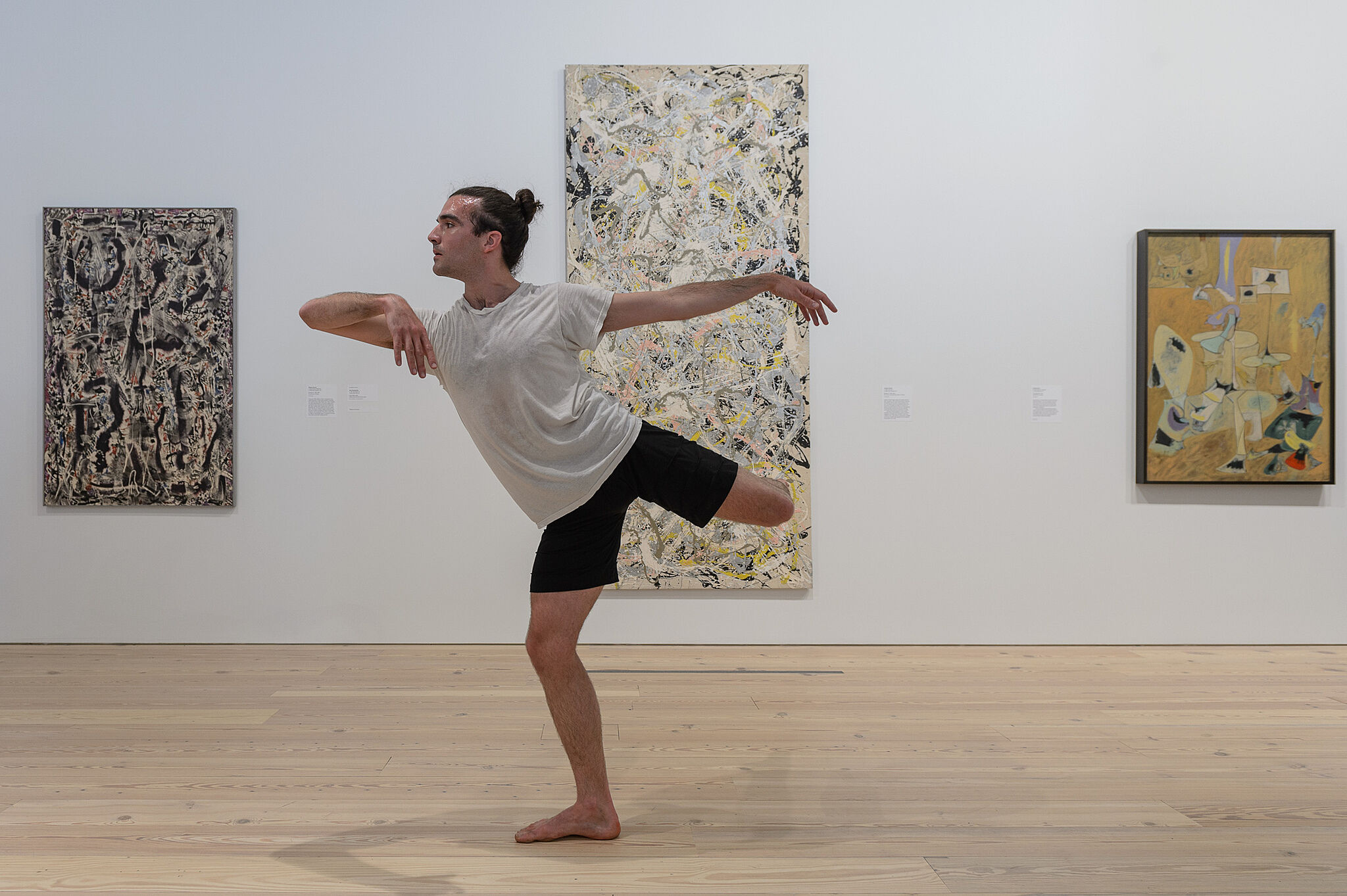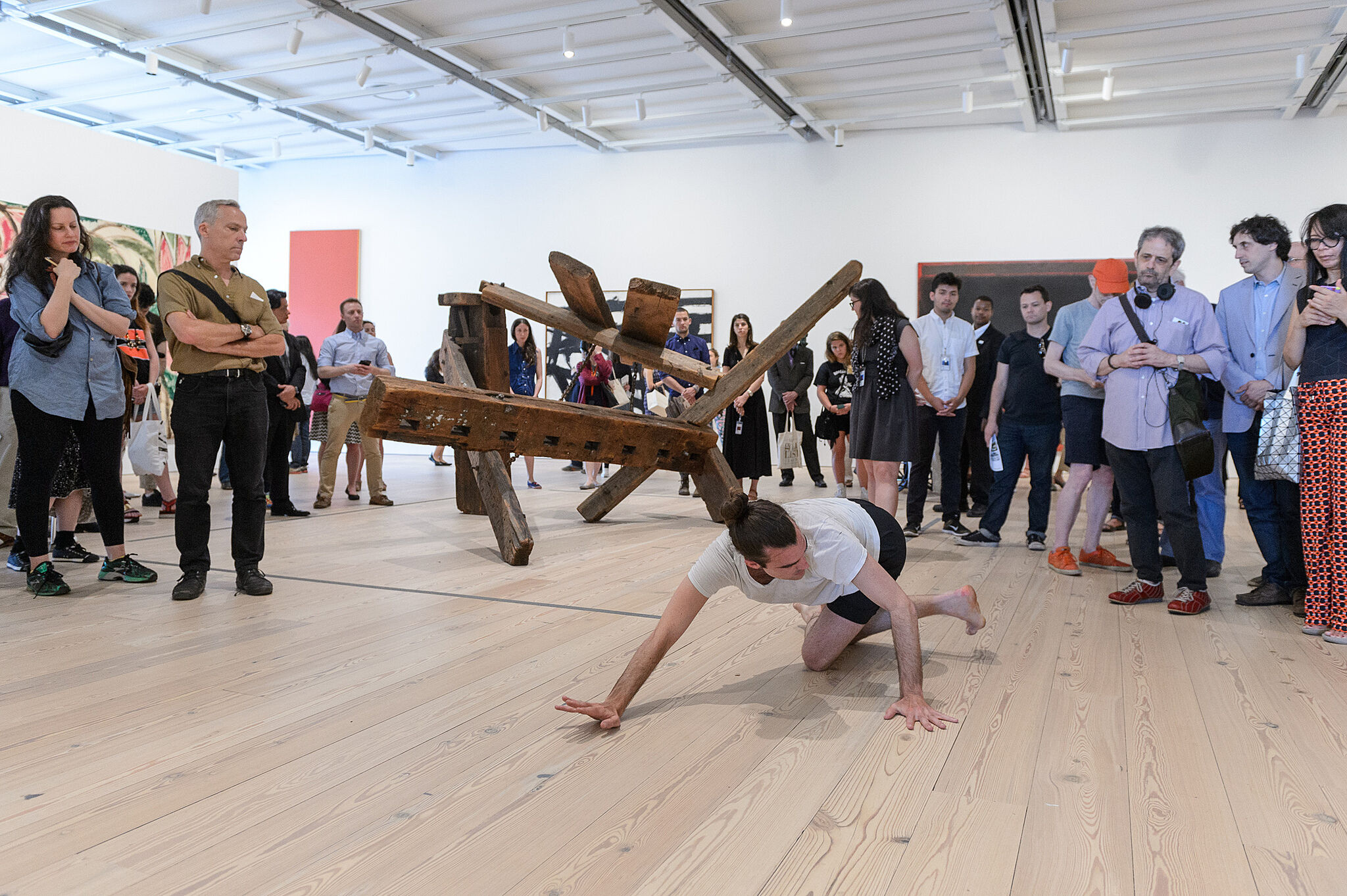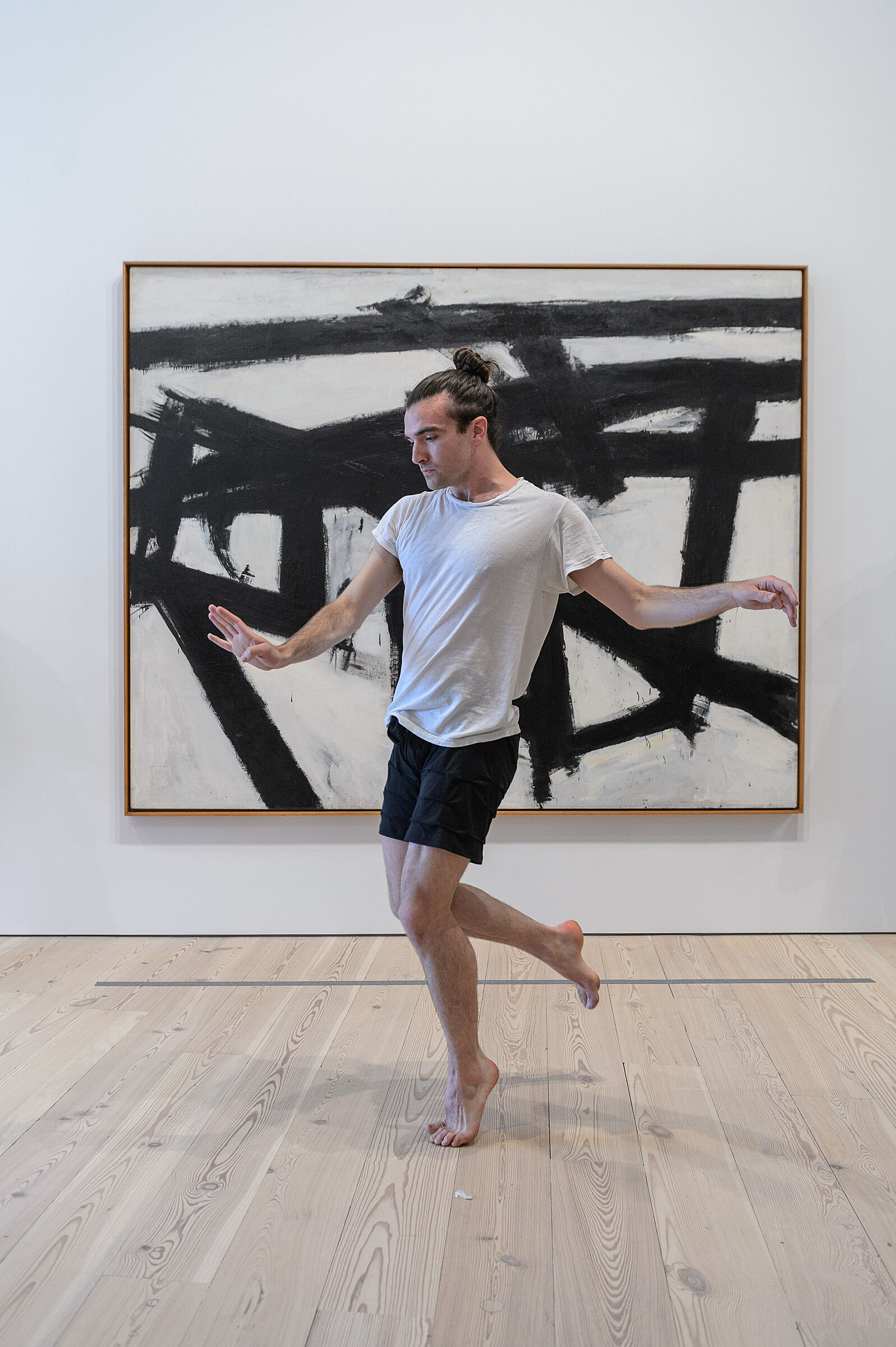99 Objects: Silas Riener On Number 27 by Jackson Pollock
Aug 19, 2015
On June 26, dancer and choreographer Silas Riener was paired with Jackson Pollock’s Number 27, 1950 (1950) for a program in the ongoing series 99 Objects. Named in honor of the Museum’s new address, 99 Gansevoort Street, these in-gallery programs focus on a single work of art from the Whitney’s collection, with presentations by artists, writers, Whitney curators and educators, and an interdisciplinary group of scholars.
Riener is a dancer and choreographer who graduated from Princeton University in 2006 with a degree in Comparative Literature and certificates in Creative Writing and Dance. A 2014 New York City Center Choreographic Fellow and a Mellon Artist-in-Residence at the Newhouse Center for the Humanities at Wellesley College, Riener works as a solo artist as well as collaboratively with Rashaun Mitchell, dancer and choreographer, on immersive dances designed for the spaces in which they are performed.
Riener used his body to engage with the artwork kinetically. Although he used the Pollock as his main source of inspiration, Riener danced throughout the entire area of the seventh floor gallery entitled New York, New York, 1955. Circuiting the room twice in a meditative orbit, his movements were tailored to evoke the formal qualities of each painting and sculpture.
As Riener danced, viewers had to negotiate the space along with him, alternately retreating out of his way and following him to the next artwork. Improvisational in nature, his movements channeled the expressive diversity of the pieces: from the bold gestures of Lee Krasner’s The Seasons (1957) to the contemplative balance of Mark di Suvero’s sculpture Hankchampion (1960). His energetic dancing contrasted starkly with the mostly immobile crowd around him and highlighted how a visitor’s experience of a museum is often limited to a single plane of movement, forward and backward.
I had the privilege of watching Riener’s rehearsal among a small group of museum staff on a Tuesday when the Museum is closed, but watching him dance on a busy Friday afternoon gave me a sense of how the audience’s response to his movements is similar to a dance itself. During the rehearsal I had as much freedom of movement as Riener did to enjoy the space and watch him dance from all sides. During the actual performance, however, the audience had to negotiate their bodies in relation to the position of the artworks, to the dancer, and additionally in relation to the physical reactions of all the other visitors as they were pushed in unexpected directions. Riener’s choreography is often site-specific, but when the crowd was implicated in the flow of his movements, his dancing became crowd-specific as well.
Ultimately, Riener’s 99 Objects program was a testimony to the opportunities created by the Whitney’s new building. His movements invigorated the physical space of the gallery by showcasing the formal dialogue between the artworks around the room. His performance and the other 99 Objects programs continue to be a daily celebration of the potential for creative engagement with the art provided by the Whitney’s new home in the Meatpacking District.
By Rebecca Wilton, Intern, Public Programs and Public Engagement



